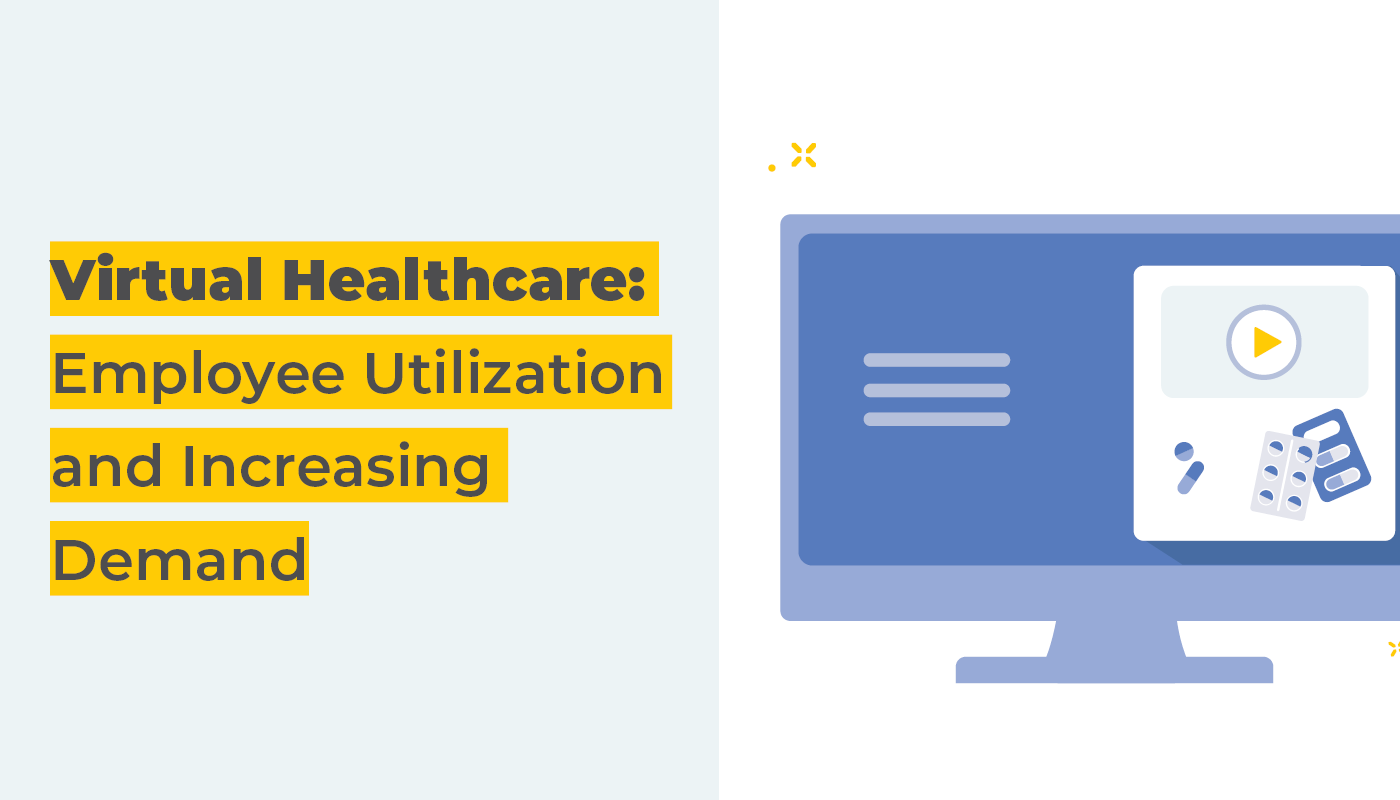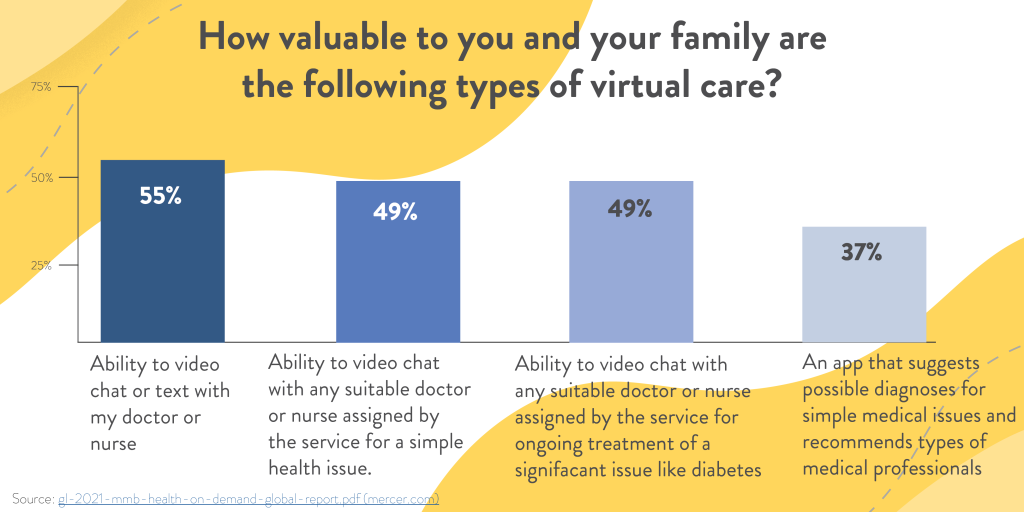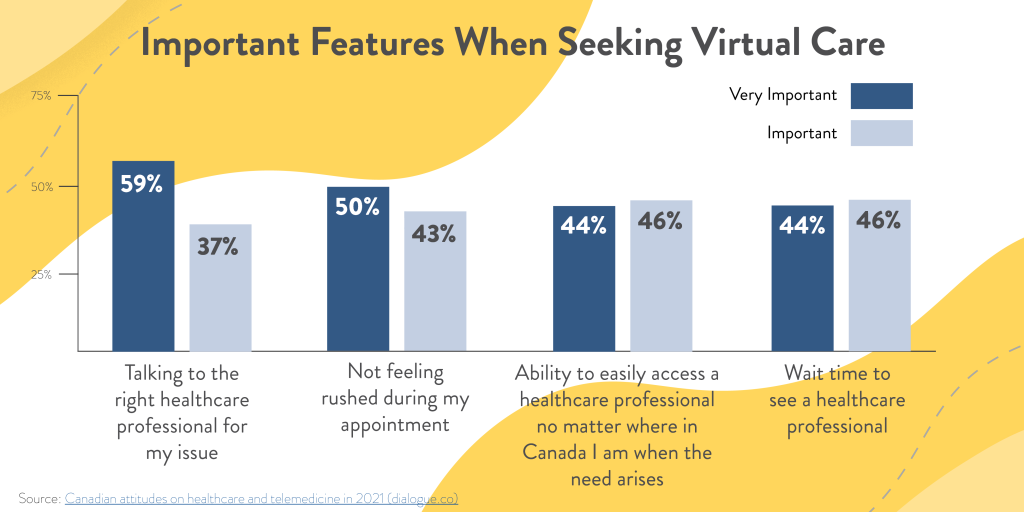Virtual Healthcare: Employee Utilization and Increasing Demand
By: Benefits by Design | Tuesday February 1, 2022
Updated : Tuesday April 22, 2025
The idea of being able to video call each other seemed like a fantasy even 20 years ago. Fast forward to now, and we now have the ability to communicate virtually with anyone around the world! That technology was quickly added to healthcare systems, allowing for virtual healthcare appointments, and more.
Virtual healthcare solutions are one of the technologies that saw significant uptake during the pandemic. Social distancing measures and office closures had Canadians turning to telemedicine options that allowed them to connect with healthcare practitioners from home.
So are Canadians embracing this modern technology? According to some recent surveys, consumer appetite and usage is here to stay. And employees want their employers to facilitate their virtual healthcare journey.
Telemedicine in Canada: What it is, Where It’s Going, and Why it Matters
The Demand for Virtual Healthcare
Employees have spoken! In fact, 82% of Canadian Employees agree their employer should offer virtual healthcare access through their employee benefits as per the Canadian Attitudes on Healthcare and Telemedicine in 2021 Dialogue Survey.
This much is clear; the addition of virtual healthcare and wellness apps can help companies differentiate themselves. In this candidates market, giving your company a competitive edge is key to your recruitment strategy.
In fact, the Mercer Health on Demand Global Report shows that 46% of those who have access to virtual healthcare say they highly value the benefit. It’s easy to see why, with yet another Mercer Report – A Digital First Approach to Benefits in a Post-Pandemic World results showing 82% of Canadian Employees who have used telemedicine to date plan to use it the same or more post-pandemic.
It was also noted that 92% of plan members indicated they would either be willing or very willing to receive virtual healthcare services moving forward.
Fifty-five percent of those surveyed said they value or highly-value apps that find the right doctor or medical care, as well as the ability to video chat or text with their personal doctor or nurse.
Employees also see value in the following types of virtual care:

Growing Employee Utilization
Utilization of virtual care services is rising among Canadians. According to a Benefits Canada Health Care Survey, of the 43% of plan members who utilized virtual healthcare last year, the majority (76%) simply saw their family physician online (making an appointment directly with their doctor’s telemedical application) and paid out-of-pocket.
Only 13% of plan members were accessing virtual healthcare through their benefits plan. This is likely due to the fact their group benefits plans were not offering the benefit. Office workers saw the most access, with 20% of benefits plans offering virtual health care. That number went down to just 6% for an employee who worked in an educational or daycare setting.
6 Things You Should Know from the 2022 Benefits Canada Healthcare Survey
Overall, everyone seems satisfied with the quality of care they received. A whopping 88% of those who accessed the care through their benefits plan described it as excellent or very good, “compared to 73% who said the same for virtual healthcare from their usual family physician.”
There are some important features that employees feel are integral to any virtual healthcare offering:

Virtual Healthcare Options
There are a multitude of telemedical services available, including, but not limited to the following:
- General Practitioner Access: Patients now have access to a variety of companies that offer virtual doctor visits. These can be for many reasons, such as a prescription refill, a request for a lab test requisition, or even a diagnosis.
- Online Pharmacies: Now, you can organize, order, and refill all your prescriptions online and have them delivered directly to your door. Some services offer reminders when it is time for a refill, and they can also ensure all prescriptions are compatible. The uptake on these has not been as robust as other types, with just 5% of those surveyed actually using the option. This contrasts with the 37% who say they plan to order their prescriptions online once the pandemic is over.
- Mental and Psychological Assistance: There are resources and apps available that help with guided meditations or offer psychological support through digital therapy or cognitive behavioral therapy (CBT).
- Physical Wellness: Now you can even see your physiotherapist virtually. Not all issues are correctable via video, but your physiotherapist will advise if you are required to visit a clinic in-person.
- Personal and Lifestyle Wellness Supports: There are all sorts of applications to help improve employee’s happiness – including ones that target lifestyle goals, fitness goals, healthy habits, healthy eating, and work-life-balance. Employees who need help with substance use can be afraid of the backlash. Companies now offer completely confidential support that allows employees to stay working while they get help dealing with their struggle.
Learn more about the virtual healthcare options in your province:
Virtual Healthcare: Telehealth Services to Use During COVID-19
Adding Virtual Healthcare to Your Benefits Plan
It is certainly not difficult to see the value of having these services included in your employee benefits plan.
The Extended Health Care (EHC) benefit covers virtual healthcare benefits for mental support, general practitioners, and paramedical services. Certain lifestyle support is often accessed via applications that are tied to Extended Health.
Wellness Spending Accounts (WSA)s (also known as Personal Spending Accounts), can cover the cost of any wellness applications employees might use. Helping them reach their fitness, healthy eating, and lifestyle goals. From mindful meditation, recipe apps, and digital workout coaches, employers have the choice to cover anything they wish.
Employee Assistance Programs (EAP)’s can also offer digital support programs, or at least facilitate employees in finding the right one. In fact, “60% of Canadians with employee benefit plans would prefer accessing them and EAPs through a mobile or web app.”
It’s clear that virtual healthcare is here to stay. Employees and employers alike can gain from the implementation and use of telemedicine in our ever-changing world. Keeping your employees healthy and happy via virtual apps and services.


